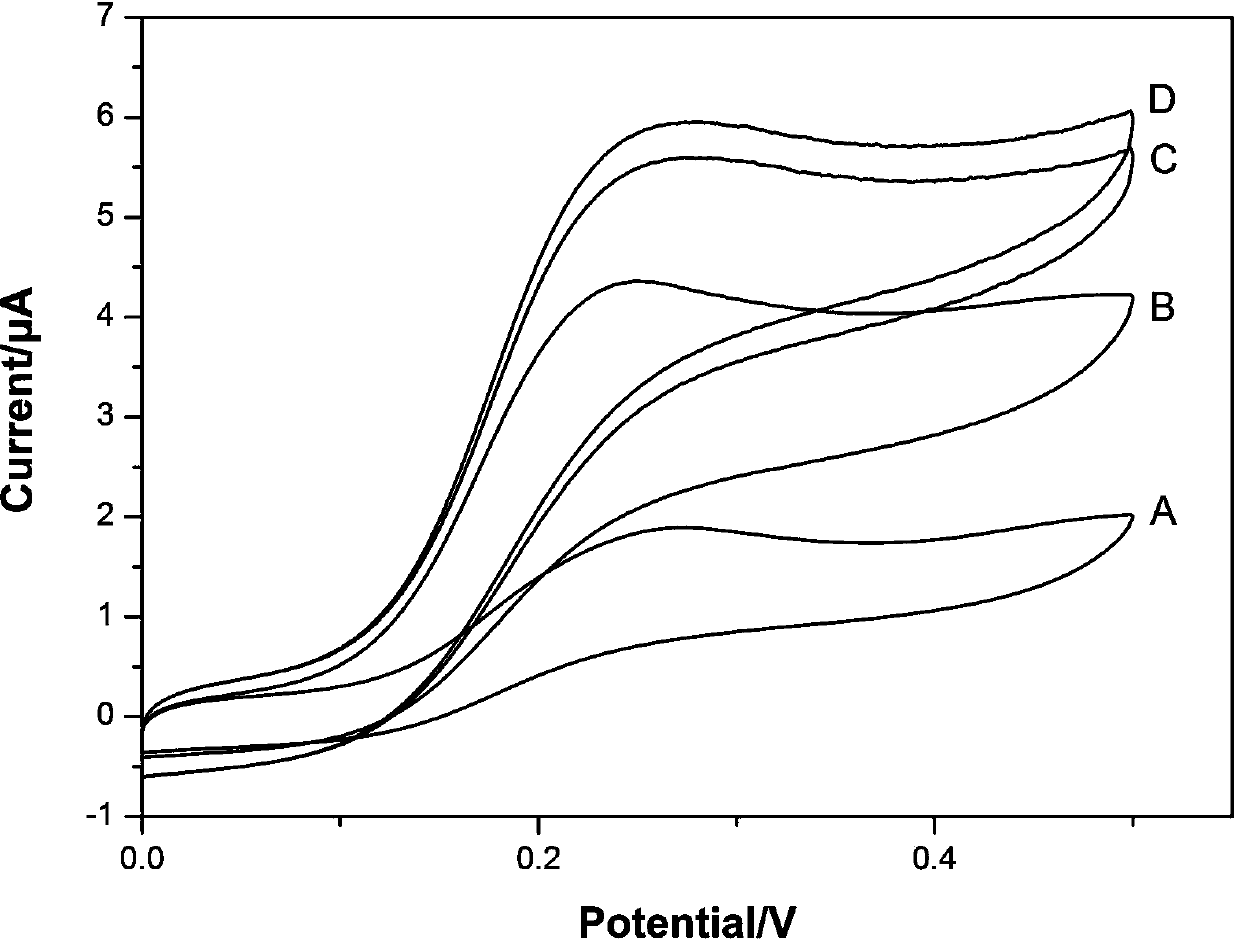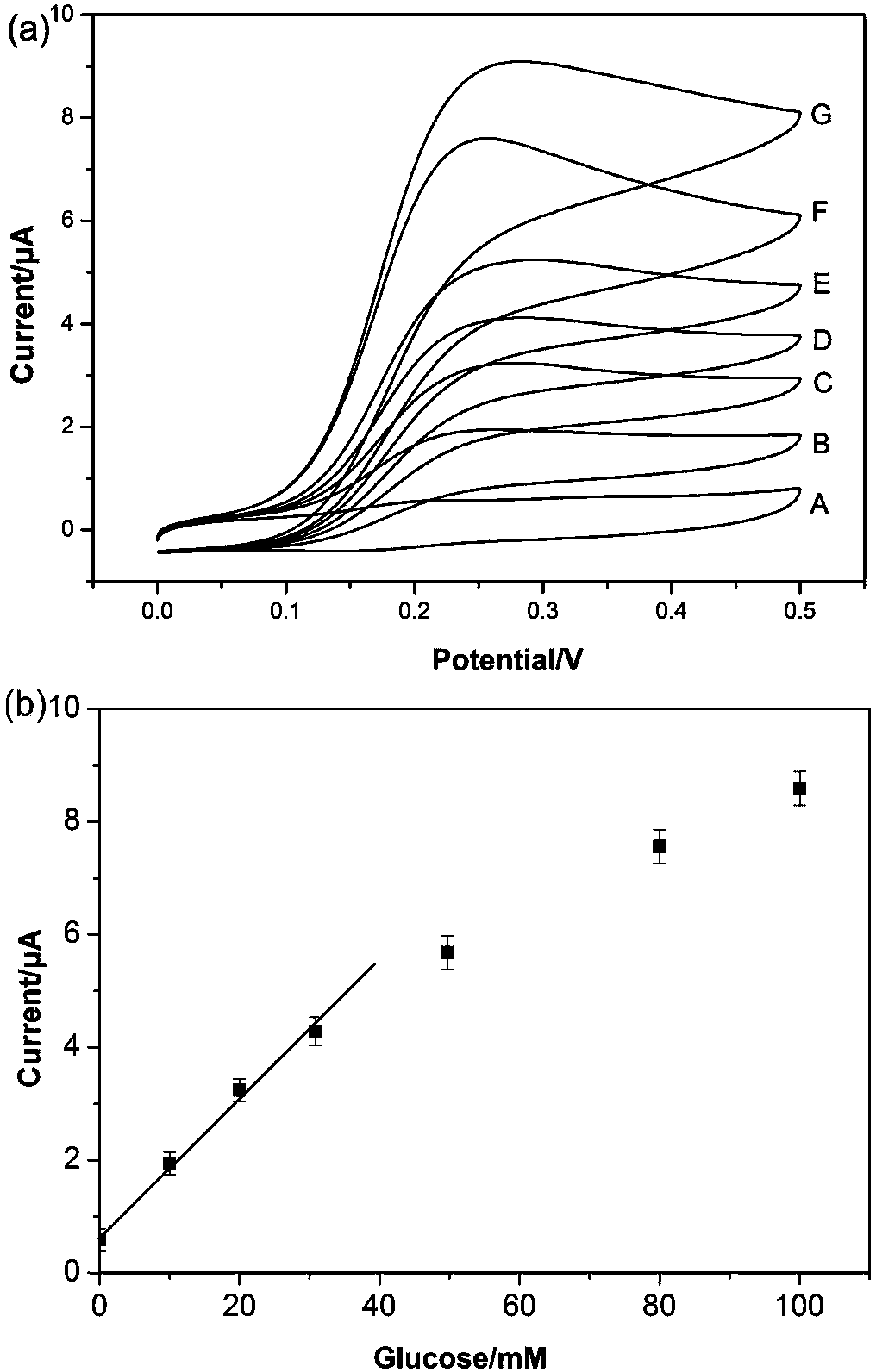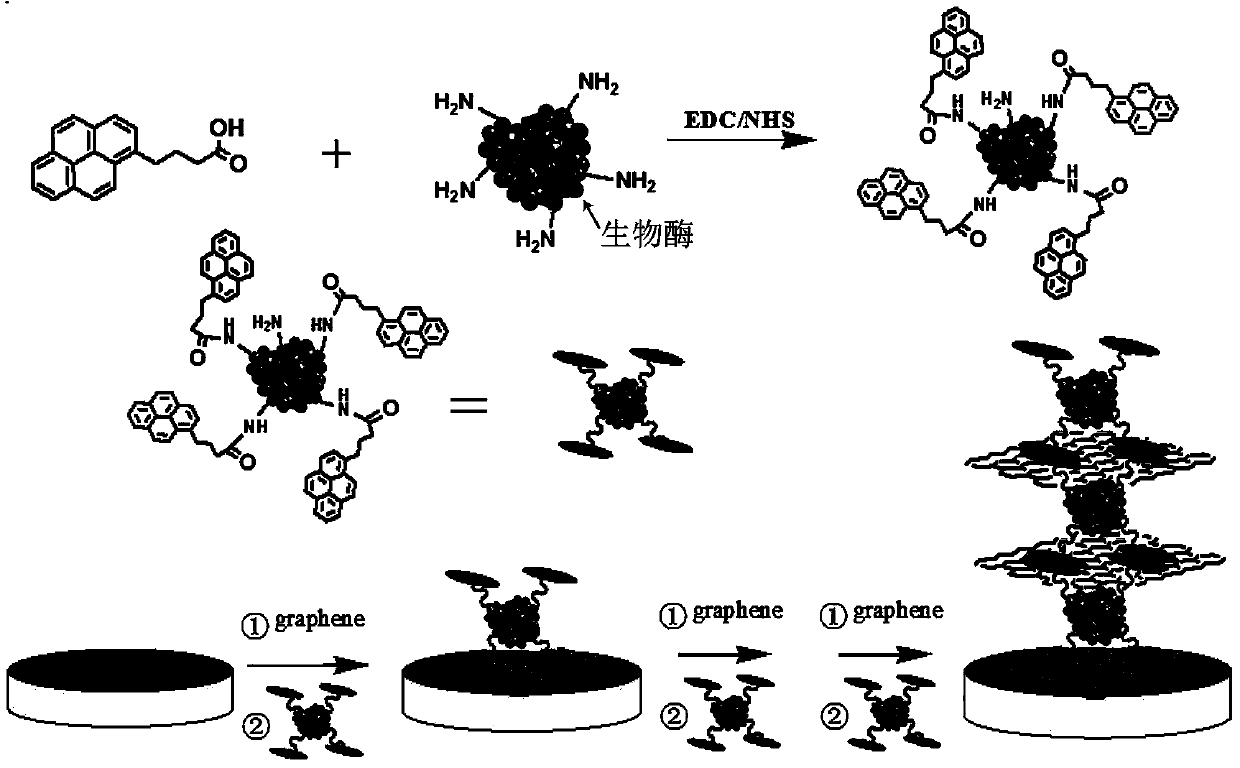Novel method for assembling multi-layer biological enzyme sensor to improve detection performance by using graphene
A graphene and sensor technology, applied in the field of electrochemical analysis research
- Summary
- Abstract
- Description
- Claims
- Application Information
AI Technical Summary
Problems solved by technology
Method used
Image
Examples
Embodiment 1
[0017] Example 1. (1) Use pyrenebutyric acid to modify the biological enzyme (glucose oxidase as an example) to have a large π ring end group on the surface: take 5 mg of glucose oxidase, 1-(3-dimethyl Aminopropyl)-3-ethylcarbodiimide hydrochloride (EDC) 10 mg, N-hydroxysuccinimide (NHS) 2 mg were dissolved in 9.5 mL pH=7.4 phosphate buffer solution. Dissolve 2 mg of pyrenebutyric acid in 1 mL of N,N-dimethylformamide (DMF). Slowly add 0.5 mL of pyrenebutyric acid solution to the glucose oxidase solution, and stir at room temperature for 10 hours. After the reaction, remove unreacted small molecules by dialysis in phosphate buffer solution to obtain pyrenebutyric acid-modified Glucose oxidase.
[0018] (2) Preparation of graphene: Oxidation of graphite powder: Add 2 g of graphite powder, 1 g of potassium persulfate, and 1 g of phosphorus pentoxide to 3 ml of concentrated sulfuric acid, and obtain a dark blue liquid after 6 hours. Dilute with distilled water, filter, wash, an...
PUM
 Login to View More
Login to View More Abstract
Description
Claims
Application Information
 Login to View More
Login to View More - R&D
- Intellectual Property
- Life Sciences
- Materials
- Tech Scout
- Unparalleled Data Quality
- Higher Quality Content
- 60% Fewer Hallucinations
Browse by: Latest US Patents, China's latest patents, Technical Efficacy Thesaurus, Application Domain, Technology Topic, Popular Technical Reports.
© 2025 PatSnap. All rights reserved.Legal|Privacy policy|Modern Slavery Act Transparency Statement|Sitemap|About US| Contact US: help@patsnap.com



